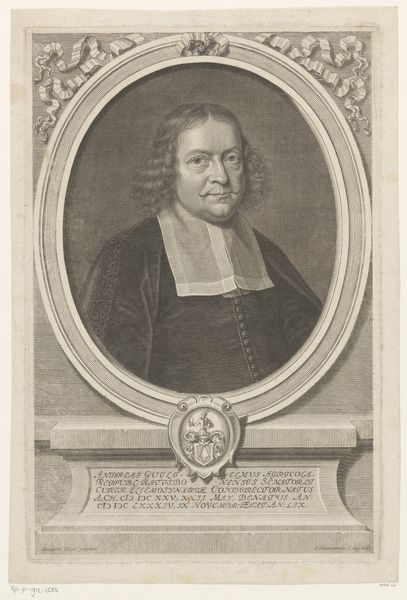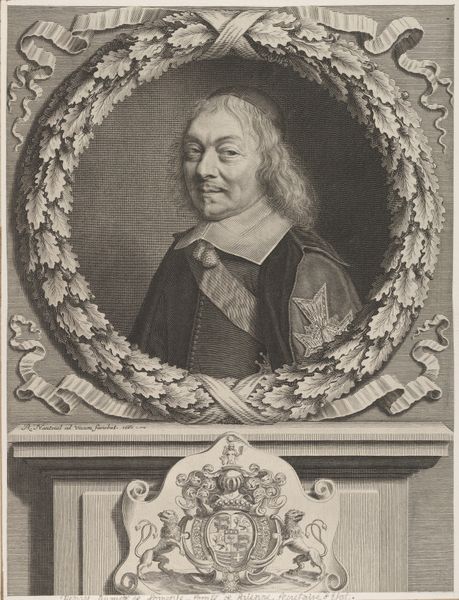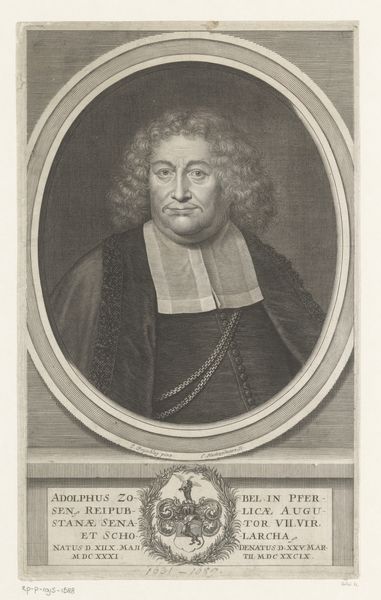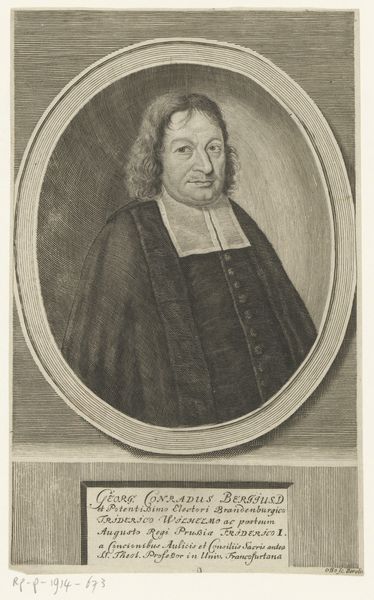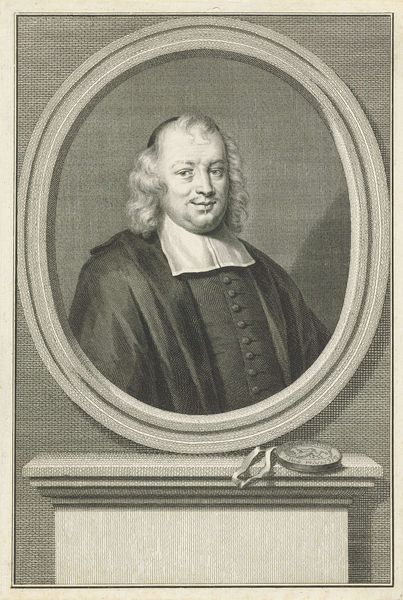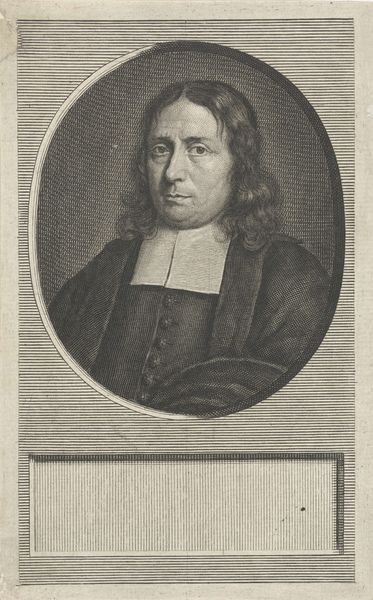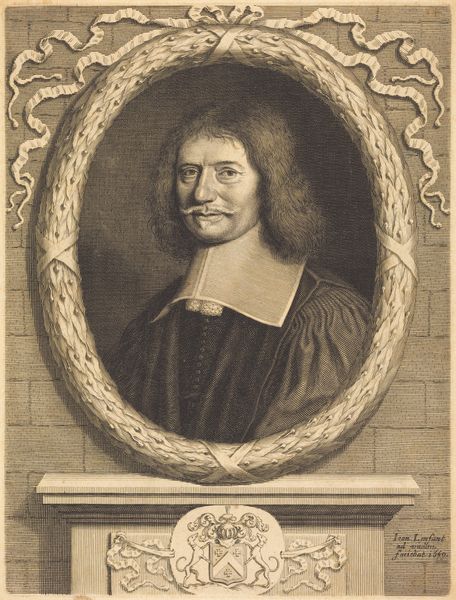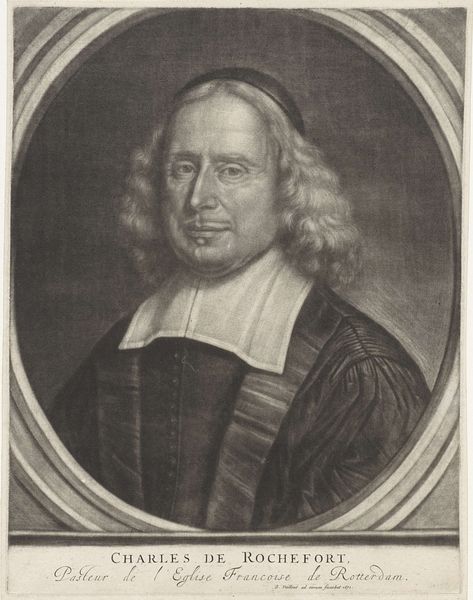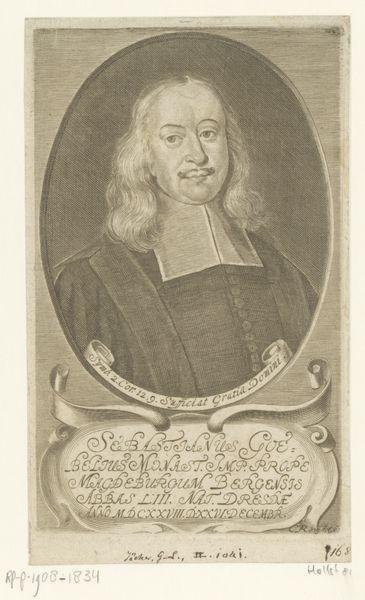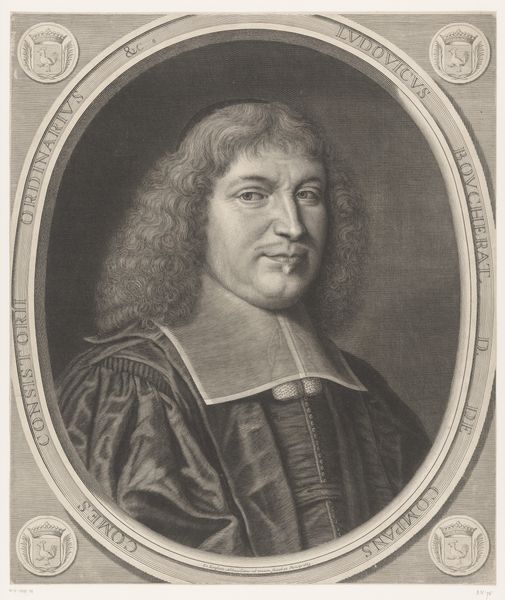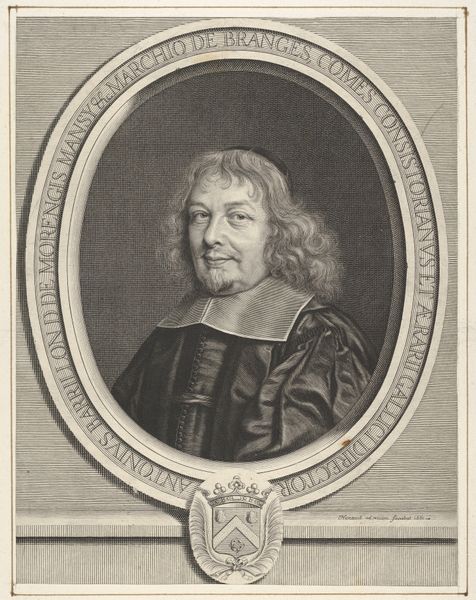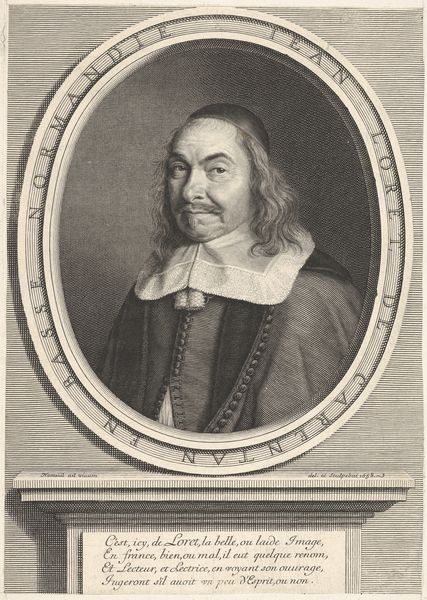
print, engraving
#
portrait
#
baroque
# print
#
caricature
#
history-painting
#
academic-art
#
engraving
Dimensions: height 362 mm, width 278 mm
Copyright: Rijks Museum: Open Domain
Curator: Here we have Jean Lenfant’s 1661 engraving, “Portret van Etienne Baudrand de Pradel.” It's a fairly standard Baroque portrait, with rich decorative elements, all executed as a print. Editor: Standard is not the word that comes to mind. It’s like staring into the eyes of mild, upper-class contentment… perhaps bordering on boredom? He looks as if he's perpetually stifling a yawn behind that tiny moustache. Curator: I find that rather harsh. Remember the context; these portraits were instruments of power, of social standing. Look at the laurel wreath surrounding him, the family crest, the very deliberate pose… Editor: Oh, I’m sure Etienne Baudrand de Pradel was terribly important! But look closer. There's something almost cartoonish about the exaggerated frame around the portrait and his very wide-eyed, polite expression. It's as if the artist struggled to capture something essential, perhaps a depth that wasn't really there. Curator: Perhaps you are being a bit harsh, but you do have a point about the stiffness. Academic art of the period sought idealisation, but Lenfant's approach reveals the artificiality of the performance itself. It does expose something interesting about the subject. Editor: Right? I see that his clothing gives the impression of status and a high position but also conveys this need for external affirmation; even though he seems bored by it all. What do you suppose Baudrand de Pradel did to be immortalised in print? Curator: Research tells me Etienne Baudrand de Pradel was a lawyer serving in the parlement in Grenoble. These prints would often function almost like promotional material or calling cards. Editor: Ah, so a Baroque business card! He doesn’t look very persuasive. More like someone I’d avoid at a stuffy gathering. Though the man definitely had presence, a well groomed head of hair and nice tailoring that adds sophistication to this portrait. Curator: True, but there is something incredibly compelling about viewing it now. It acts as a historical artifact, revealing social structure and artistic practice within that very specific timeframe. Editor: Indeed. For all my lightheartedness, there is also something deeply fascinating about seeing history presented through a face—however bored it may appear. A window into the past that gives insight into a society that can often feel remote.
Comments
No comments
Be the first to comment and join the conversation on the ultimate creative platform.
